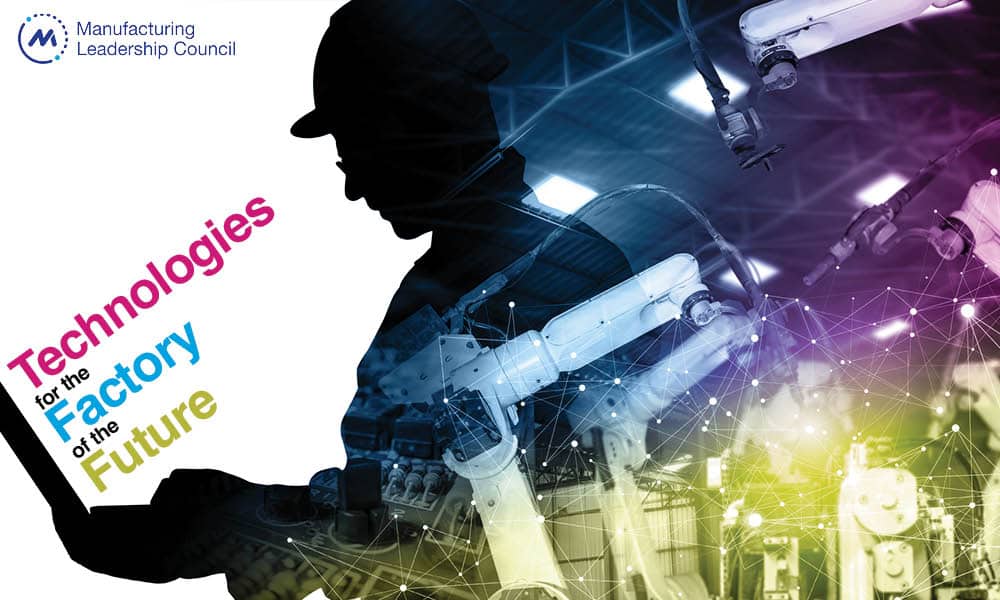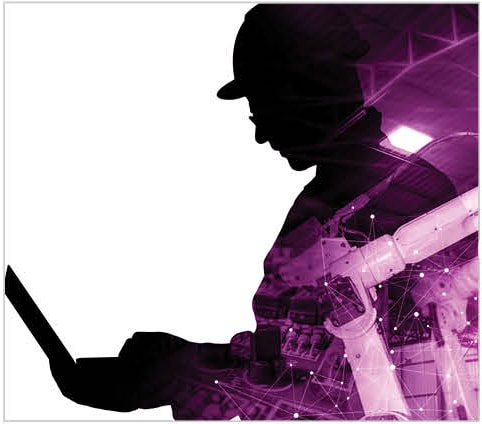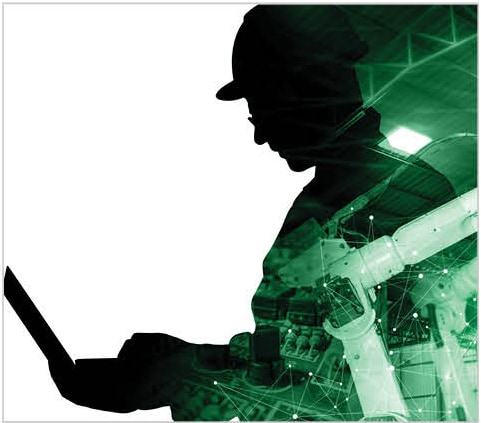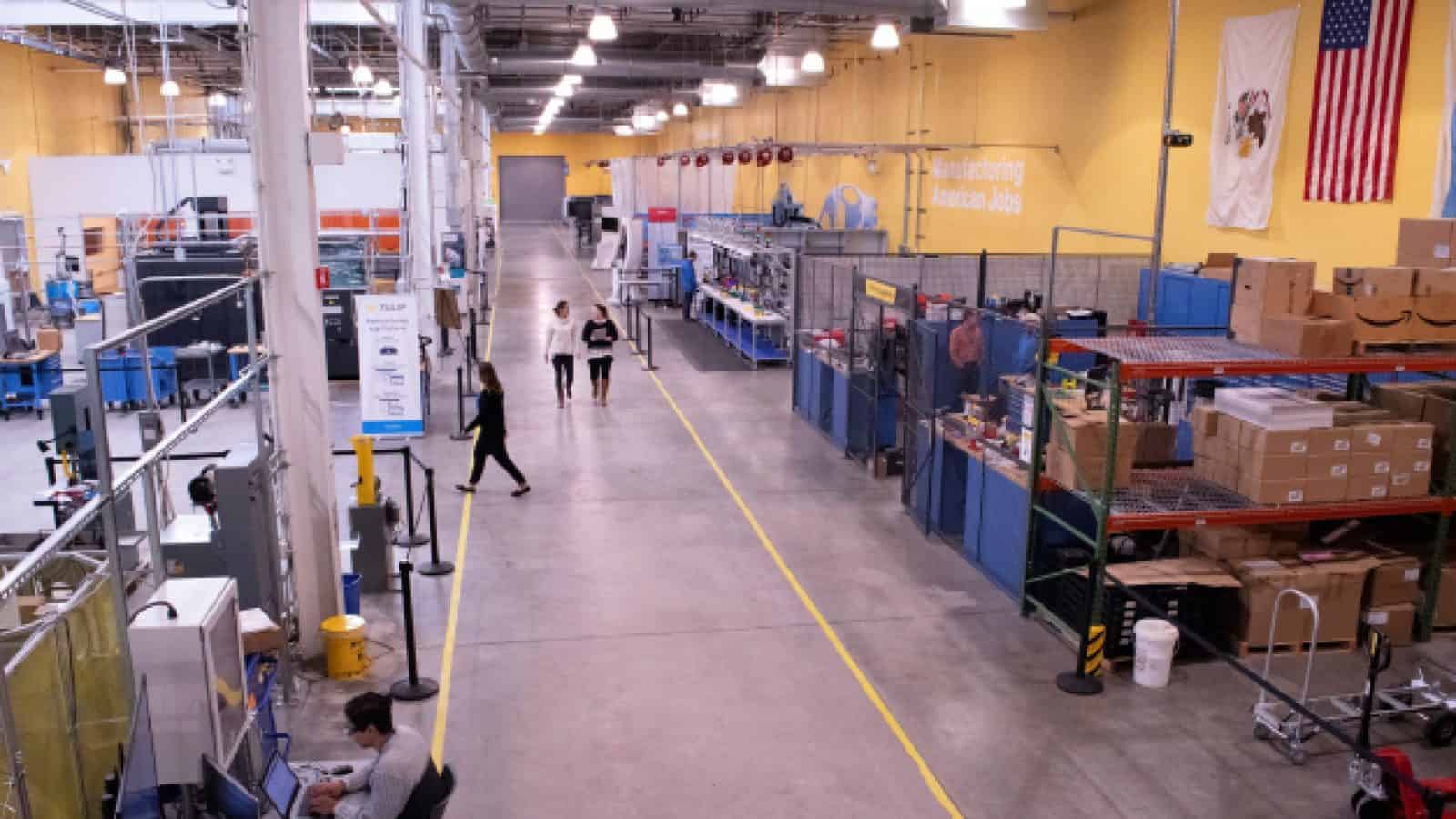Technologies for the Factory of the Future

To future-proof manufacturing, drive profits and serve customers, organizations must examine supply chains, sustainability, digital transformation and more

TAKEAWAYS:
● The foundation for manufacturing’s future is data and organizations’ ability to effectively capture and use data in every factory element.
● Manufacturers need to think beyond operations when they apply Manufacturing 4.0 so that they also evolve their supply chains and sustainability efforts.
● AI/ML and virtual tools can have big effects that can be amplified with collaboration, optimization and continuous improvement.
Globally, manufacturers are experiencing growing pressure to reduce carbon emissions in their production processes. The manufacturing industry is characterized by disruptions and volatility, supply chain problems, upcoming inflation, and increased financial costs, making it paramount that manufacturers find innovative solutions to face the challenges ahead.
Sustainability issues and digital transformation have become the main drivers for the next three to five years and that will shape the future of the manufacturing industry towards 2030. These trends drive the necessity of true innovation further. Even though there has been plenty of focus on buzzwords like Industry 5.0 and similar, this is now becoming a reality. The path forward is clear: manufacturers must engender greater resilience and future readiness by optimizing resource usage, minimizing waste, and embracing renewable energy sources. However, the difficulty lies in simultaneously ensuring profitable operations.
Embrace the Future of Manufacturing Through Data
A key component in all the trends and challenges is data, like reliable data on environmental sustainability, traceability throughout the value chain and product life cycle, and real-time data to detect supply chain disruptions.
For manufacturing companies, emerging technologies help expand the opportunities to become a data-driven factory of the future. Using low-cost sensors and IoT, gathering data throughout the manufacturing process is now possible. With advanced AI and machine learning algorithms, organizations can enable predictive maintenance of expensive manufacturing machinery and reduce costs and downtime. Digital twins can enable virtual simulation of development, testing, and validation of products, and AR/VR can even let customers try products before they are made.
Implement Resilient Supply Chains
Better visibility of the supply chain can lead to a more flexible manufacturing value network. For example, production can either be moved in-house or outsourced to an alternate location when a disruption occurs without adversely affecting operations.
Four clusters of disruptive digital technologies will enable supply chain digitization.
- Commodity IoT sensors with the ability to capture and process data and connect/exchange data with other systems over communications networks to provide transparency.
- Cloud computing and access to advanced algorithms enable organizations to derive insight, model, analyze and make accurate predictions to provide flexibility and efficiency.
- Technologies like robotics, business process management and robotic process automation, and voice assistants and chatbots enable the automation of physical and non-physical processes, leading to faster and more efficient processing.
- Combining disparate IT and OT data sources into a single system to generate digital operational insights and business KPIs at an enterprise level.

“Manufacturers must engender greater resilience and future readiness by optimizing resource usage, minimizing waste, and embracing renewable energy sources”
Achieve More Sustainable Manufacturing Practices
Reducing waste production is an important step in achieving more sustainable manufacturing practices. Currently, approximately 300 million tons of plastic waste is produced every year. By implementing a waste reduction program, designing products for sustainability, implementing lean manufacturing principles, using technology to optimize processes, product lifecycle management, e-waste management, and partnering with suppliers, manufacturers can reduce waste, conserve resources, and minimize their environmental impact. This helps meet the growing demand from eco-conscious consumers for sustainable products and benefits the bottom line of manufacturers.
Five Steps to Becoming A Future-Proof Manufacturer
A future-proof strategy for manufacturing sustainability will therefore demand internal systems that measure sustainability impacts that are commonplace to count today and those that are likely to be tomorrow. What raw materials are being used? How much fresh water is the process consuming? How much energy is being used in the process, and what are the primary energy sources? Soon we will likely see tools that automatically collect and require all digital data on sustainability indicators for products and services.
1. The Virtual Twin Experience
A virtual twin is a real-time virtual representation of a product, manufacturing or supply chain that can be used to model, visualize, predict and provide feedback on properties and performance. Virtual twin technologies provide an opportunity to reduce operational costs and waste and drive efficiency and innovation across the value chain. A Virtual Twin Experience can help companies develop the digital manufacturing and supply chain of the future.
2. Optimization
Optimization is a mathematical approach for decision-making to get the best outcome under conditions or constraints, like requiring the allocation of scarce or limited resources. A smart, autonomous and integrated optimizer is key to addressing the dynamically evolving challenges like:
- Reducing manufacturing costs and maximizing fulfillment through plant layout, facility and production planning, scheduling and sequencing
- Minimizing transportation costs through efficient flow and storage of goods from point-of-origin to point-of-consumption
- Minimizing labor costs by creating staffing plans to meet demand, while respecting shift preferences, labor regulations, vacations, etc.

“A future-proof strategy for manufacturing sustainability will demand internal systems that measure sustainability impacts that are commonplace today and those that are likely to be tomorrow”
3. Artificial Intelligence (AI) and Machine Learning (ML)
Manufacturers have more data than ever before, which makes AI/ML ripe for disruption. AI/ML is a game changer for manufacturing and supply chain as it has the potential to offer CAPEX-free productivity improvements. Through sophisticated pattern recognition, AI/ML can help enhance processes considered difficult to improve due to their complexity, seemingly unpredictable fluctuations or insufficient objective decision-making capabilities. An end-to-end, fully interconnected, digital and AI/ML ecosystem can deliver exponential and sustainable impact by driving innovation and resilience.
4. Continuous Improvement and Real-time Operations
The enterprise business process is to enable greater visibility and easy access to information for all stakeholders. The data driven platform technology empowers end-to-end transparency and performance management reporting to reassess strategic priorities. At the same time, it facilitates ad hoc, agile problem-solving to identify supply chain issues, perform root-cause analysis and ensure corrective actions are taken on the most important opportunities. KPIs are tracked to ensure improvement, especially in times of uncertainty.
5. Collaboration
A systematic approach is required to effectively and inclusively consider multiple perspectives on decisions and work efficiently with all relevant stakeholders for shared understanding and mutual benefit across the organization. Lean collaborative platform-based solutions enable teams to leverage modern, cloud-native, interactive environments, equipped with lean boards and widgets to digitalize shop floor activities, which allow teams to systematically bring people together and collaborate, facilitate structured problem solving, and nurture better team relationships, ultimately driving synergy, better decision-making and a competitive advantage.
Sample Customer Case Study:
A leading consumer packaged goods and retail (CPGR) manufacturer has implemented a factory of the future plan to deliver innovation faster, cheaper, and smarter, achieving the following:
- Brand integrity with interlocking traceability, including suppliers
- Best practices enforced across evolving supply chain
- New product introductions delivered up to 20% faster
- Cost-of-Goods Sold lowered by up to 27%
- Visibility and control over 30 sites
- Globally coordinating new product introduction (NPI)
Benefits of Technologies for the Factory of the Future
- Increase flexibility to respond to long-term or fundamental changes in the supply chain and market environment by adjusting the configuration.
- Bring in agility to efficiently change operating states as a response to environmental uncertainty or volatile market conditions.
Enable collaboration to work efficiently with other entities for mutual benefit across the organization. - Reduce redundancy with strategic and selective use of spare capacity and inventory that can be invoked to cope with a crisis, such as demand surges or supply changes.
Conclusion
Manufacturing and operations are complex, and today’s hyper-connected, fast-evolving markets only add to the challenge. To address a global economy in an advanced digital age and sustainability requirements, manufacturers must have the visibility and control to satisfy customers who are demanding more than products and services — they want individualized, emotional experiences that they can “own.” M
About the author:

Prashanth Mysore is Senior Director: Global Strategic Business Development at Dassault Systèmes
